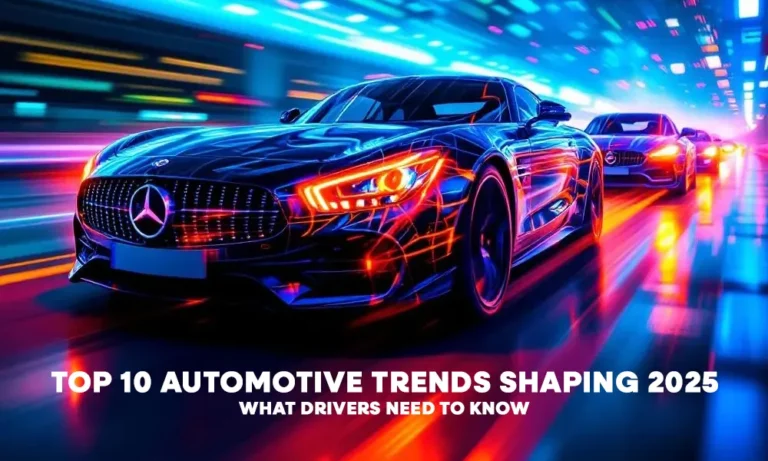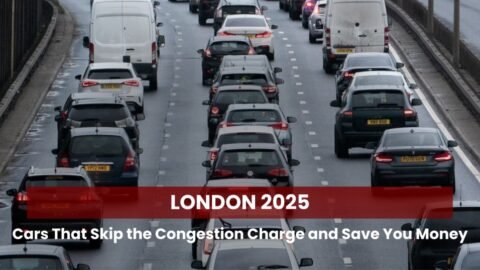For the auto industry, 2025 has been a year that has seen emerging technologies continuing to play a transformative role, paving the way for a smarter, cleaner, and more connected mobility. Whether you’re a weekend driver, fleet manager, or just auto-curious, these are the trends that are reshaping how we drive, buy, and think about cars in 2025.
1. EVs Go Mainstream
Electric vehicles aren’t just for early adopters anymore. Thanks to falling battery costs, expanded charging networks, and government incentives, EVs are now showing up in every segment—from budget hatchbacks to luxury SUVs.
What’s new in 2025:
- Lithium-sulfur and solid-state batteries are pushing ranges past 800 km.
- China and Europe are leading the charge, with EVs making up over 25% of new car sales globally.
- Fast-charging stations are popping up in rural areas, not just urban hubs.
2. Autonomous Driving Gets Smarter
Self-driving tech is no longer sci-fi—it’s creeping into your daily commute. Level 2 and 3 autonomy is becoming standard in premium and mid-range models.
What’s new in 2025:
- AI-powered systems now predict pedestrian behavior and road hazards.
- Hands-on-wheel detection tech ensures drivers stay alert when needed.
- China has developed a booming global ADAS market, with its share projected to be 45% by 2030.
3. Cybersecurity Hurdles
Cars are now more like rolling computers. That means they’re vulnerable to hacks, data breaches, and remote tampering. In 2025, cybersecurity is an important consideration of the buying decision.
What’s new in 2025:
- OEMs now must abide by ISO/SAE 21434 and UN R155 regulations.
- AI-first security platforms monitor threats in real time.
- Vehicle Security Operations Centers (VSOCs) are becoming standard.
4. Sustainability at the Factory Level
It’s not just about tailpipe emissions anymore. Automakers are rethinking how cars are built—from sourcing recycled materials to powering factories with solar and hydrogen.
What’s new in 2025:
- Gigafactories are going green with closed-loop battery recycling.
- OEMs like Magna are aligning with the UN Sustainable Development Goals.
- Lightweight composites and bio-based plastics are replacing steel and rubber.
5. Connected Cars & Telematics Go Real-Time
Your car is now a data hub. From predictive maintenance to real-time traffic rerouting, connected vehicles are changing how we interact with mobility.
What’s new in 2025:
- With 5G and satellite connectivity in place, you have access to coverage even in remote locations.
- AI-powered diagnostics can schedule service before breakdowns happen.
- V2X (Vehicle-to-Everything) tech now allows cars to communicate with their surroundings, including traffic lights, other vehicles, and even pedestrians.
6. AI-Powered Driving Experiences
Artificial intelligence is poised to become your new co-pilot. And it’s not just about automation. It also has to do with personalization, prediction, and performance.
What’s new in 2025:
- You can use AI to customize your car’s climate control settings, music, and drive modes.
- Conversational AI like ChatGPT is becoming standard.
7. Regenerative Braking Gets an Upgrade
EVs and hybrids are getting smarter about energy recovery. Regenerative braking is becoming much more common and is being added as a performance feature.
What’s new in 2025:
- Supercapacitors store braking energy more efficiently than batteries.
- Regeneration efficiency now hits 65–70%, depending on driving style.
8. Advanced Semiconductors Power Everything
Semiconductors are playing a big role in modern vehicles, whether it’s in infotainment or safety systems. In 2025, the semiconductor game is levelling up.
What’s new in 2025:
- Silicon carbide (SiC) chips improve EV powertrain efficiency.
- AI processors enable real-time decision-making for autonomous systems.
9. Chinese OEMs Go Global
Chinese automakers are not just dominating at home any longer. They’re expanding aggressively into Europe, Latin America, and Southeast Asia.
What’s new in 2025:
- BYD, Geely, and SAIC now control 68% of China’s domestic market.
- European OEMs are closing plants while Chinese brands open new ones.
10. Alternate Fuels & Hybrid Innovations
EVs aren’t the only path forward. Hydrogen, biofuels, and next-gen hybrids are also carving out space in the mobility arena.
What’s new in 2025:
- Plug-in hybrids now offer 100+ km electric range.
- Vehicle-to-grid (V2G) tech lets hybrids feed energy back to the grid.
- An increasing number of commercial fleet operators are now choosing biofuels and hydrogen-powered vehicles rather than traditional ICE cars.
Final Thoughts
2025 is the year mobility gets personal, smarter, and sustainable. EVs gaining even more popularity, autonomous vehicles being considered by many countries, tackling the cybersecurity problem, sustainability being adopted at the manufacturing level, connected cars gaining ground, AI being used to enhance driving experience, regenerative breaking being upgraded, advanced semiconductors being used more extensively, Chinese auto manufacturers going global in a big way, and alternate fuels like high hydrogen also being considered by manufacturers are 10 major automotive trends shaping 2025. Whether you’re upgrading your ride or just keeping tabs on the future, these trends are more than buzzwords—they’re the new reality.
To know more about automotive related news visit ask about cars now.







